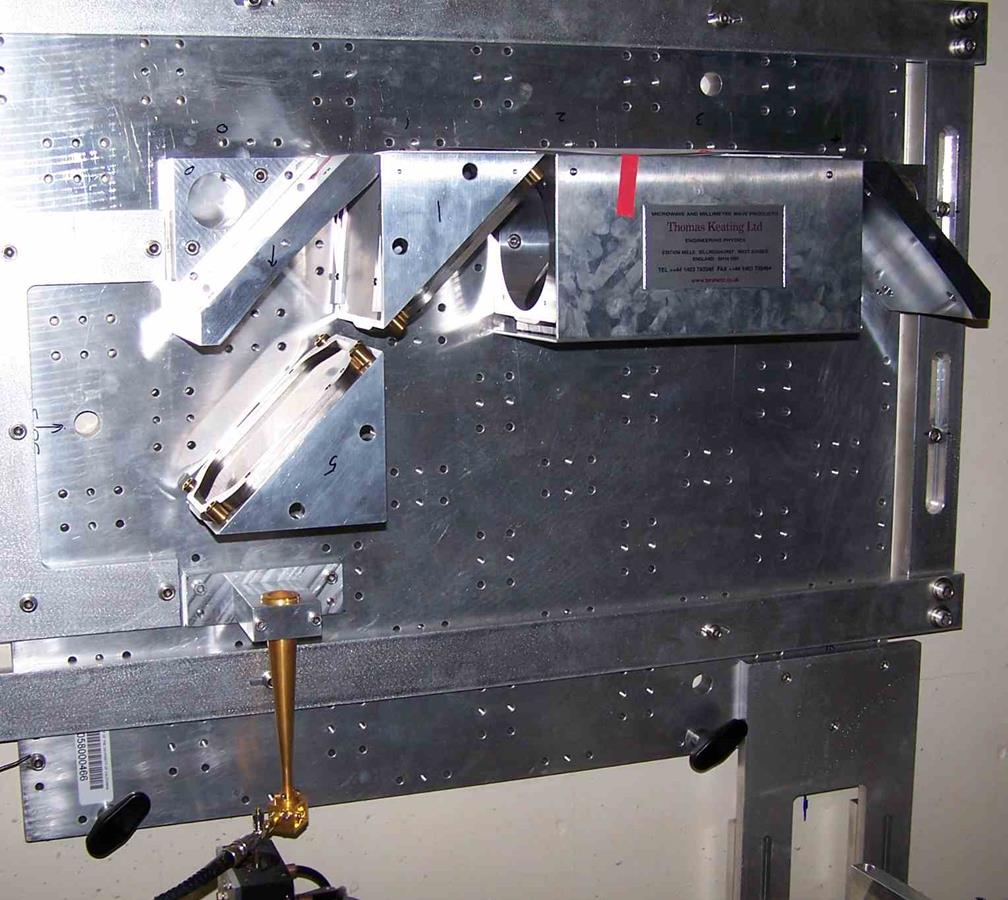240 GHz Isolator
THZ FEL locked with TK supplied Isolator
UCSB report phase locking of their pulsed 240 GHz FEL with a souce protected by a Quasi-optical TK isolator

High Field Pulsed Electron spin resonance, with potential applications across a range of sciences - including molecular biology, require short (nanosecond time scale) monochromatic high power pulses of radiation in the mm-region of the Electromagnetic Spectrum.
High Field Pulsed Electron spin resonance, with potential applications across a range of sciences - including molecular biology, require short (nanosecond time scale) monochromatic high power pulses of radiation in the mm-region of the Electromagnetic Spectrum.
Free electron Lasers have the potential to provide such pulses, but they do not produce, in their natural state, a monochromatic beam - many closely spaced frequencies are formed. However it is potentially possible to inject a low power signal into the laser cavity before it operates to "seed" the frequency, and stop other competing modes, at other frequencies, forming.
A solid state source - producing a few tens of milliwatts can provide such power, but such sources are themselves vulnerable to being destroyed by the very high power signal they have helped to form.
Some form of isolation - a "non-reciprocal device" - is need to protect the source. Such a device will pass power in one direction with low loss but a power trying to move in the opposite direction will suffer high loss.
TK designed a double free space Quasi-optical ferrite isolator to protect a Virginia Diodes Inc 240 GHz source allowing the source to seed the UCSB Free Electron Laser, without being destroyed by the very high returning power UCSB colleagues wish it to produce - potentially pulses with power at the kW level.
The principle of a free space isolator is quite simple: A linearly polarized wave passes unattenuated though a polarizing grid whose wires are set orthogonally to the beam's E field polarization. The beam enters a ferrite sheet whose magnetization is parallel to the direction of beam propagation, and normal to the surface of the sheet (reflections being minimised by the addition of an impedance matching or "blooming" layer). The polarization of the wave suffers Faraday rotation as it moves though the plate, and the thickness of the ferrite - about 2mm - is set such that a rotation of 45 degrees is achieved by the time the beam leaves the plate.